The day the ice went out ...
By Ken Reese, Joanne Hutchinson, Tom and Rita Davidson
“It’s moving, the ice is moving.” Rita Davidson has been waiting for this day since late March from her home in Davidson’s Bay on Skeleton Lake where she can view the main part of the lake. The ice surface has gradually covered with more water. Underneath, the ice has been slowly disolving, forming mysterious patterns likened to the stalagmitic roofs in deep caves. Today a wind has risen, and with the shore-ice melted, the ice sheet begins to move and break up. The docks on Tomelin Bluffs were lifted the previous fall, anticipating the usual pileup of ice against their shore. Rita adds the date to her historical series of some 20 years. Winter and frozen lakes have long been part of tradition where so many cottagers have fond memories of winter trips to the lake. Some walking, some sporting snow shoes or skis, and others riding snow machines. Some even remember fishing through the ice with the ceremonial chopping to make the opening for the fish line. Skeleton Lake has long been famous for its lake trout. In 1970, the Ministry of Natural Resources creel census surveys reported over 100 fish huts.[1] Early settlers from Lancelot followed the road to our lake each fall to fill their food lockers. In the 1900s, the Bert Shea family from Ufford celebrated Christmas with trout from our lake.[2] In recent times, fishing regulations have greatly reduced the sport of ice fishing. |
| Ice has been a vital source of refrigeration and some greatly enhanced their annual income cutting ice for the railroad and Huntsville. There were ice-cutting parties in Wilson’s Bay when a work party would gather to cut ice blocks and each would haul ice to their individual ice houses. In early times, ice was cut by hand with saws and later, chainsaws lubricated with vegetable oil made the work easier. In the ice houses, ice blocks were surrounded with sawdust for insulation and layers of ice were separated with sawdust. Ice would last well into the fall season. For Thanksgiving of 1957, the Cassans on Norvoc Bay opened up their old ice box in the back porch to hold the food for the big family celebration. "Wilson’s Lodge always had ice and Bill instructed us to help ourselves. We dug through some three feet of sawdust and with a set of large tongs and considerable effort, removed a block." Each summer, a block of Bill's ice kept the beer and pop cold in a large tin bathtub at the cottagers' annual fish fry in Davidson’s Bay. Bill did not cut ice for many more seasons. Good ice was becoming more difficult to harvest as seasons became warmer. The Cassans bought a second refrigerator that made things a lot simpler. Ice that was once 24 inches thick is now maybe 10 inches thick. Shortly after 2015, the ice house was demolished. |
From Robert Wilson's diary: March 13. We left Skeleton Lake this morning, where we have been for the last two weeks or 17 days in all. We were putting in our ice, also Snider’s (Clifton Island) and Moore’s (Moore’s Bay). We put in 116 blocks for ourselves, 72 for Snider, and 95 for Moore. The ice is not good this year, very little blue ice from 2 to 5 inches, the rest is composed of slush in about one foot. | Two Muskoka Surprises, Skeleton Lake and Wilson’s Lodge. Lenore Wilson. 2005. |
Ice Cutting on Simolean Bay |
|
|
What the records show ... Rita and Tom Davidson have provided their records of when the ice has gone out each year since 2003. In 2016, at 2:30 p.m. on Tuesday, April 19, Rita noted that Tom had taken the "tiny" (boat) over to Clifton Island to check out their docks. "Everything was great no damage from ice at all!" |
| Another report from the winter of 2011-2012 commented that ice conditions that winter on Skeleton Lake were unique. The lake did not freeze over until mid- January and the ice went out early - the earliest recorded for many years. On many lakes it was not even worth putting out the fishing huts, considering they had to be removed by mid- March. The weather records suggest that this was also the warmest winter in some time. |
Tom has fond memories of Ernie LaCroix, the "ice man" who had an ice house in Davidson's Bay. As kids, the boys in the bay would ride in the back of Ernie's old Ford F100 truck as he delivered ice to cottagers. The boys would wait for him to arrive and help clean off sawdust to find the 18" x 36" x 18" blocks of ice. Each piece was cut in half and rinsed in the rain barrel before being loaded onto the truck. Perhaps some of you remember Ernie, who later became the mailman! Tom Davidson standing on "ice waves" on the shoreline. |
|
Rita and Tom's Stats ... |
The future? A warming trend is not obvious but climate forecasts for Muskoka suggest that by 2050, Rita may be out of her job. Weather models created by scientists for the Muskoka Watershed Council noted that a typical winter has 30 days of temperatures over 0°C and by 2050, this number would double. This will result in a forecast of only 33 days of below zero temperatures and would have a profound effect on traditional winter ice activities and on the lake biota. Planning For Climate in Muskoka. Muskoka Watershed Council, 1916. |

The Little Devil's Face at the shoreline.


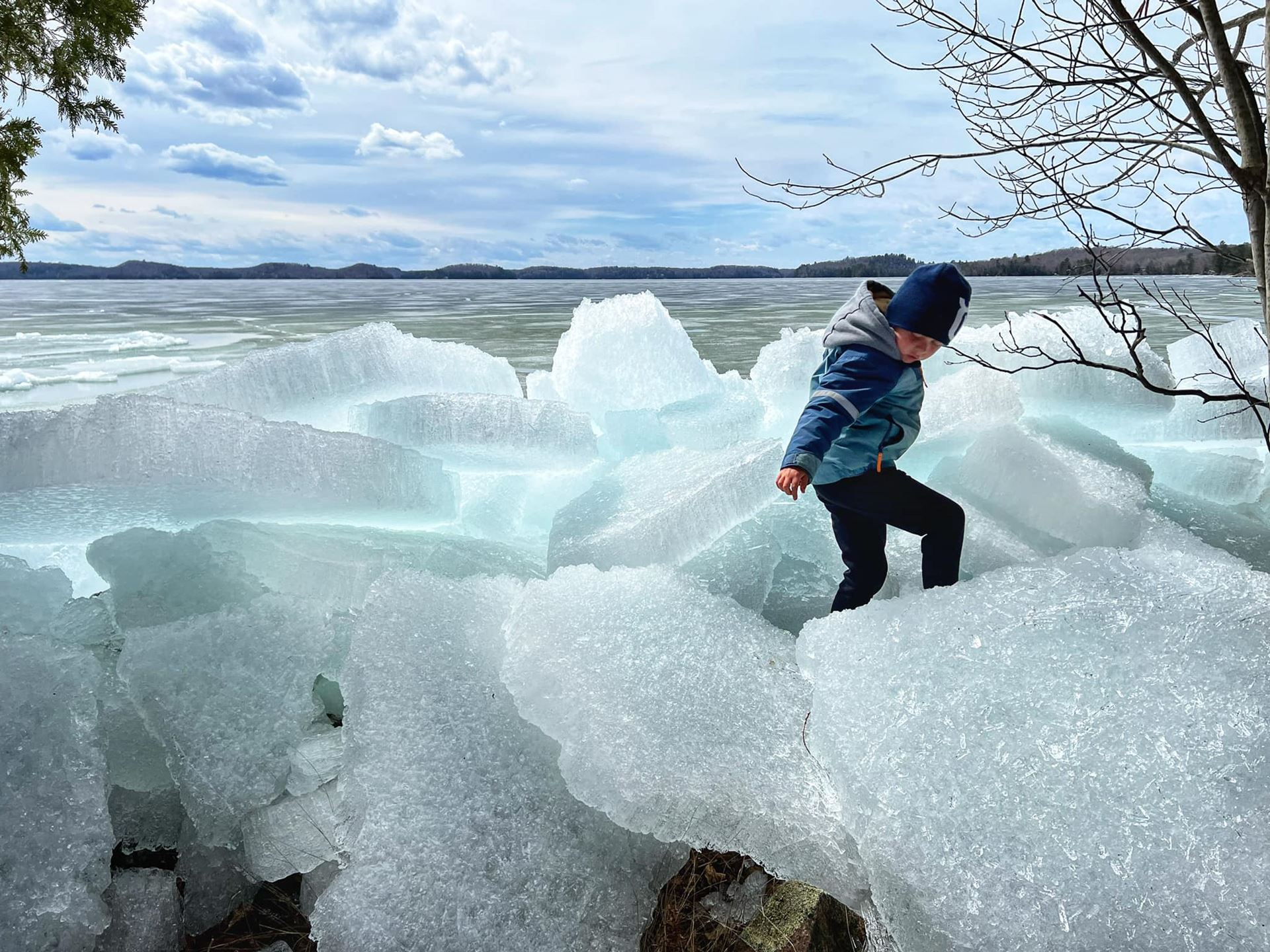 North shore ice - Adele Churchill
North shore ice - Adele Churchill
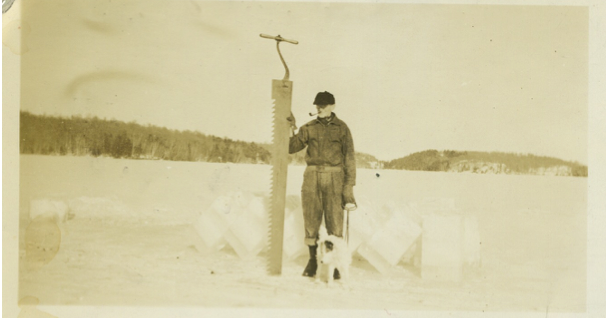
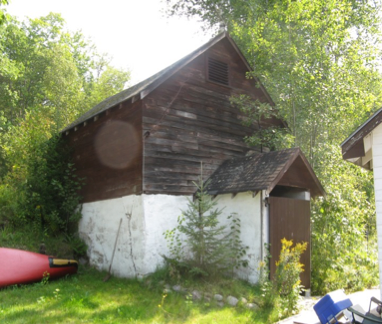 Views of Wilson's Lodge Ice House, 2015.
Views of Wilson's Lodge Ice House, 2015.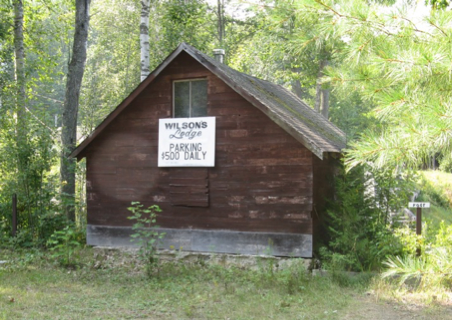
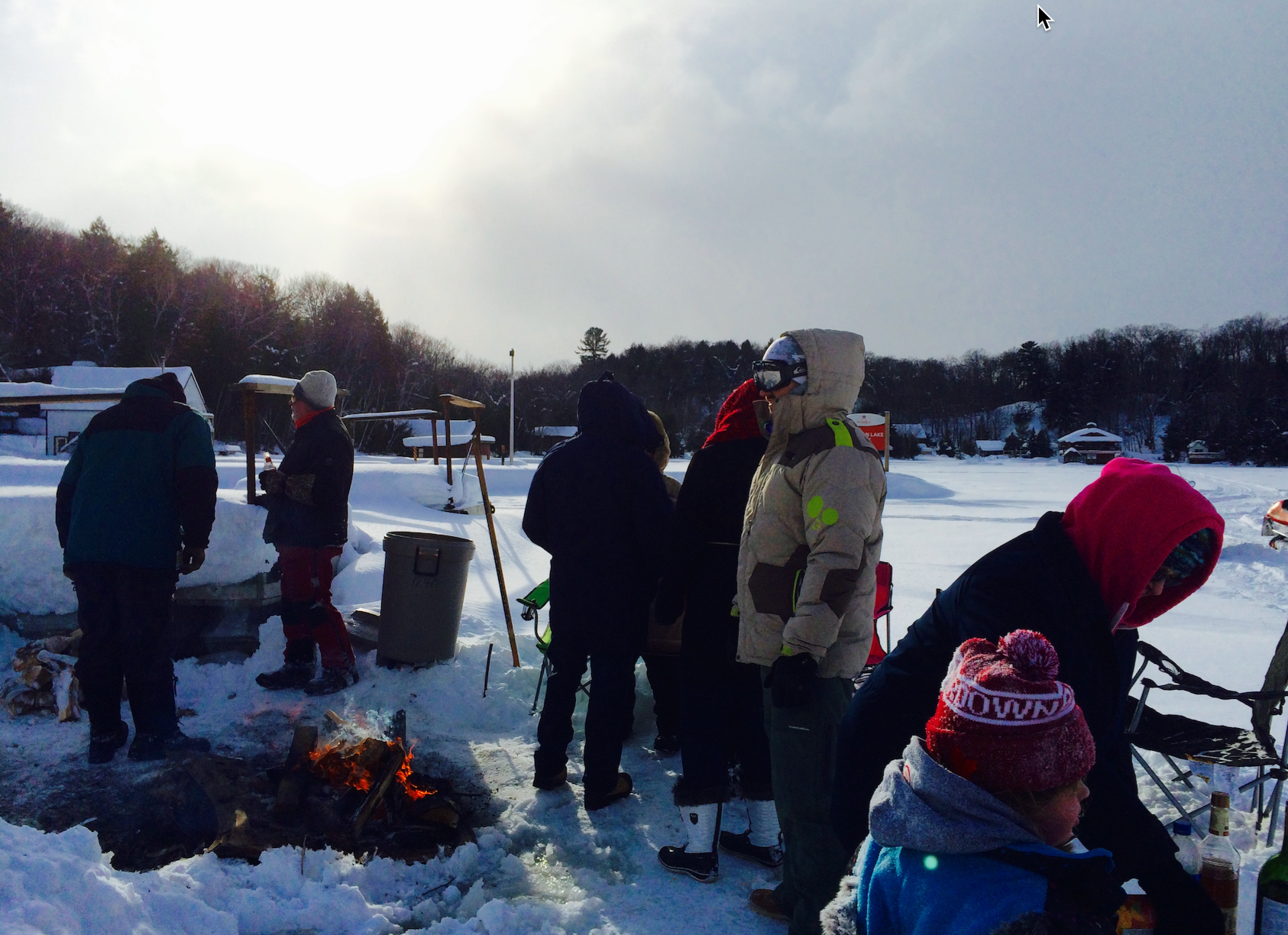 Family Day with the Davidsons.
Family Day with the Davidsons.